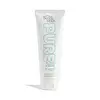What's inside
What's inside
 Key Ingredients
Key Ingredients

 Benefits
Benefits

 Concerns
Concerns

 Ingredients Side-by-side
Ingredients Side-by-side

Water
Skin ConditioningGlyceryl Stearate
EmollientMyristyl Myristate
EmollientEthylhexyl Stearate
EmollientCanola Oil
EmollientDihydroxyacetone
Skin ConditioningGlycerin
HumectantPEG-100 Stearate
Ethoxydiglycol
HumectantPropanediol
SolventButyrospermum Parkii Butter
Skin ConditioningDiglycerin
HumectantPhenoxyethanol
PreservativeDimethicone
EmollientTocopheryl Acetate
AntioxidantSodium Acryloyldimethyltaurate/Vp Crosspolymer
Emulsion StabilisingErythrulose
TanningPolyglycerin-3
HumectantXanthan Gum
EmulsifyingCetearyl Alcohol
EmollientSodium Metabisulfite
AntioxidantCitric Acid
BufferingMagnesium Stearate
Cosmetic ColorantSodium Benzoate
MaskingParfum
MaskingWater, Glyceryl Stearate, Myristyl Myristate, Ethylhexyl Stearate, Canola Oil, Dihydroxyacetone, Glycerin, PEG-100 Stearate, Ethoxydiglycol, Propanediol, Butyrospermum Parkii Butter, Diglycerin, Phenoxyethanol, Dimethicone, Tocopheryl Acetate, Sodium Acryloyldimethyltaurate/Vp Crosspolymer, Erythrulose, Polyglycerin-3, Xanthan Gum, Cetearyl Alcohol, Sodium Metabisulfite, Citric Acid, Magnesium Stearate, Sodium Benzoate, Parfum
Water
Skin ConditioningDihydroxyacetone
Skin ConditioningBis-PEG-18 Methyl Ether Dimethyl Silane
EmollientIsopropyl Palmitate
EmollientCocoglycerides
EmollientAcrylamide/Sodium Acryloyldimethyltaurate Copolymer
Emulsion StabilisingPentylene Glycol
Skin ConditioningGlyceryl Stearate
EmollientTheobroma Cacao Seed Butter
EmollientButyrospermum Parkii Butter
Skin ConditioningDimethyl Isosorbide
SolventSodium Hyaluronate
HumectantAscorbic Acid
AntioxidantTocopheryl Acetate
AntioxidantChamomilla Recutita Flower/Leaf/Stem Extract
Skin ConditioningGlycerin
HumectantC13-14 Isoparaffin
EmollientErythrulose
TanningLaureth-7
EmulsifyingCetyl Phosphate
EmulsifyingAlcohol
AntimicrobialCetyl Alcohol
EmollientStearyl Alcohol
EmollientSodium Hydroxide
BufferingPhenoxyethanol
PreservativeChlorphenesin
AntimicrobialWater, Dihydroxyacetone, Bis-PEG-18 Methyl Ether Dimethyl Silane, Isopropyl Palmitate, Cocoglycerides, Acrylamide/Sodium Acryloyldimethyltaurate Copolymer, Pentylene Glycol, Glyceryl Stearate, Theobroma Cacao Seed Butter, Butyrospermum Parkii Butter, Dimethyl Isosorbide, Sodium Hyaluronate, Ascorbic Acid, Tocopheryl Acetate, Chamomilla Recutita Flower/Leaf/Stem Extract, Glycerin, C13-14 Isoparaffin, Erythrulose, Laureth-7, Cetyl Phosphate, Alcohol, Cetyl Alcohol, Stearyl Alcohol, Sodium Hydroxide, Phenoxyethanol, Chlorphenesin
Ingredients Explained
These ingredients are found in both products.
Ingredients higher up in an ingredient list are typically present in a larger amount.
This ingredient is also known as shea butter. It is an effective skin hydrator and emollient.
Emollients help soothe and soften your skin. It does this by creating a protective film on your skin. This barrier helps trap moisture and keeps your skin hydrated. Emollients may be effective at treating dry or itchy skin.
Shea butter is rich in antioxidants. Antioxidants help fight free-radicals, or molecules that may harm the body. It is also full of fatty acids including stearic acid and linoleic acid. These acids help replenish the skin and keep skin moisturized.
While Shea Butter has an SPF rating of about 3-4, it is not a sunscreen replacement.
Shea butter may not be fungal acne safe. We recommend speaking with a professional if you have any concerns.
Learn more about Butyrospermum Parkii ButterDihydroxyacetone, or DHA, is a simple sugar. It is frequently used in self-tanning products.
DHA binds to the amino acids in your dead skin cells to create a brown/orange color. Darkening begins to kick in a few hours after application and will continue to develop for up to 3 days. This ingredient can be drying.
Both the US and the EU have approved DHA in self-tanning products. In the EU, DHA is allowed at a maximum concentration of 10%. Most tanning products usually contain amounts between 3-5%.
If you are pregnant or have underlying medical conditions, it is best to speak with a dermatologist about using self-tanning products.
Learn more about DihydroxyacetoneWe don't have a description for Erythrulose yet.
Glycerin is already naturally found in your skin. It helps moisturize and protect your skin.
A study from 2016 found glycerin to be more effective as a humectant than AHAs and hyaluronic acid.
As a humectant, it helps the skin stay hydrated by pulling moisture to your skin. The low molecular weight of glycerin allows it to pull moisture into the deeper layers of your skin.
Hydrated skin improves your skin barrier; Your skin barrier helps protect against irritants and bacteria.
Glycerin has also been found to have antimicrobial and antiviral properties. Due to these properties, glycerin is often used in wound and burn treatments.
In cosmetics, glycerin is usually derived from plants such as soybean or palm. However, it can also be sourced from animals, such as tallow or animal fat.
This ingredient is organic, colorless, odorless, and non-toxic.
Glycerin is the name for this ingredient in American English. British English uses Glycerol/Glycerine.
Learn more about GlycerinGlyceryl Stearate is a mix of glycerin and stearic acid.
It is used to stabilize the mixing of water and oil ingredients. By preventing these ingredients from separating, it can help elongate shelf life. It can also help thicken the product's texture.
As an emollient, it helps soften skin and supports barrier-replenishing ingredients.
In cosmetics, Glyceryl Stearate is often made from vegetable oils or synthetically produced.
This ingredient may not be fungal-acne safe
Fun fact: The human body also creates Glyceryl Stearate naturally.
Learn more about Glyceryl StearatePhenoxyethanol is a preservative that has germicide, antimicrobial, and aromatic properties. Studies show that phenoxyethanol can prevent microbial growth. By itself, it has a scent that is similar to that of a rose.
It's often used in formulations along with Caprylyl Glycol to preserve the shelf life of products.
Tocopheryl Acetate is AKA Vitamin E. It is an antioxidant and protects your skin from free radicals. Free radicals damage the skin by breaking down collagen.
One study found using Tocopheryl Acetate with Vitamin C decreased the number of sunburned cells.
Tocopheryl Acetate is commonly found in both skincare and dietary supplements.
Learn more about Tocopheryl AcetateWater. It's the most common cosmetic ingredient of all. You'll usually see it at the top of ingredient lists, meaning that it makes up the largest part of the product.
So why is it so popular? Water most often acts as a solvent - this means that it helps dissolve other ingredients into the formulation.
You'll also recognize water as that liquid we all need to stay alive. If you see this, drink a glass of water. Stay hydrated!
Learn more about Water